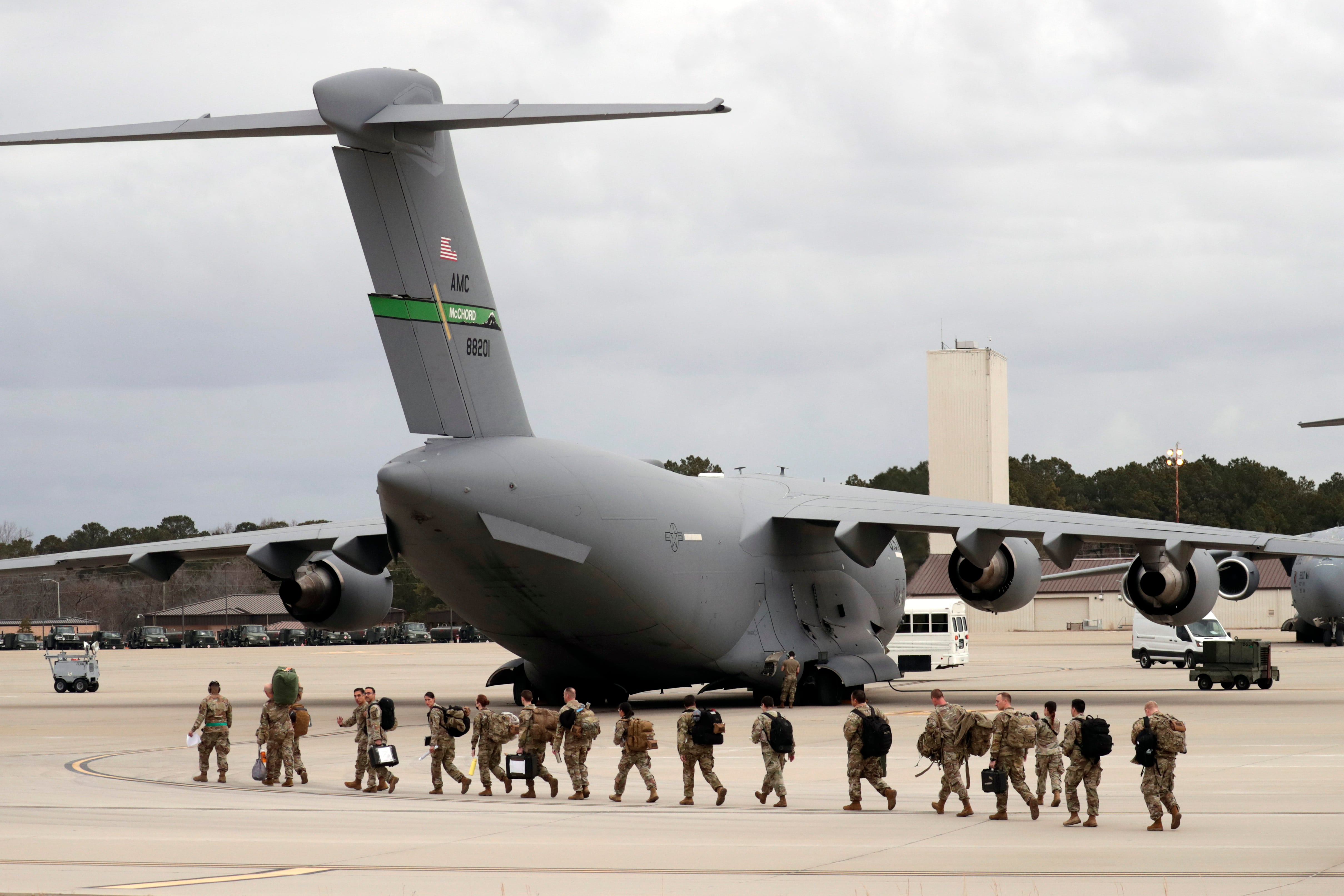WASHINGTON ― If Russian President Vladimir Putin invades Ukraine, defense analysts anticipate growth in the U.S. troop presence in Europe that would trigger a supplemental defense funding request to Congress.
The projection comes as the buildup of over 100,000 Russian troops near Ukraine has fueled Western worries of a possible offensive. White House national security adviser Jake Sullivan warned Sunday Russia could invade Ukraine “any day,” triggering a conflict that would come at an “enormous human cost.”
To bolster NATO allies, U.S. President Joe Biden is deploying about 3,000 U.S. troops to Germany, Poland and Romania, the Pentagon announced last week. Biden had placed 8,500 stateside troops on heightened alert, and most would deploy in support of the NATO Response Force, if it is activated.
Though the deployments so far are relatively small, any large, long-term rotations of U.S. forces would likely prompt the Pentagon to make a supplemental funding request, in addition to its upcoming 2023 budget request to Congress, according to several experts gathered by the Center for Strategic and International Studies to make budget projections.
“I think a further Russian invasion of Ukraine will be defining. It won’t be maybe a 9/11, but it will be close to it,” said Thomas Spoehr, director of the Heritage Foundation’s Center of National Defense. “We’ll see a supplemental of tens of billions of dollars that the European Deterrence Initiative will get. We won’t talk about China for two years, I would suspect.”
How events might unfold in Europe is unclear, so the size of the a potential expense is too — as is the question of how that expense might compete with the Pentagon’s priority investments in research and development, meant to technologically outpace China.
While Biden has repeatedly made clear he doesn’t intend to send troops into Ukraine, he has sent Javelin antitank weapons and other equipment from U.S. stocks that could be used by Ukrainian insurgents against Russian forces. And the U.S. would likely support Ukraine in other ways that cost money.
“We’re not going to have boots on the ground in Ukraine, we’re not going to be directly involved. We will be involved in terms of providing [intelligence, surveillance and reconnaissance] support,” said CSIS director of defense budget analysis Todd Harrison. “There’ll be an [operations and maintenance] cost to that as well. Whether it stays in peacetime or it actually transitions into armed conflict, we’ll have those bills.”
For the defense budget, a Russian invasion is just one more complicating factor, beyond congressional gridlock, economic inflation and the mystery surrounding when the budget will actually be introduced.
RELATED

Timing
Experts said Monday the request will likely land within weeks of Biden’s planned March 1 State of the Union address to Congress and of the release of his keystone National Security Strategy.
That could mean mid-March, when then-President Donald Trump introduced his second budget, or mid-April, or somewhere in between. Harrison projected the Biden administration, which released its very late 2022 budget on the Friday before Memorial Day weekend, could make a similar play to avoid headlines ― and dump the budget on Friday, April 15.
“What better timing to bury a budget request than to release it on a Friday that is Tax Day, that is the Friday before the Easter holiday, that is also spring break for a lot of the schools around in this area,” Harrison said. “For us analysts, it’s the worst possible day.”
Because the budget drives the congressional schedule, a later budget will mean later oversight hearings for defense officials and a shorter timeframe for defense policy and spending legislation. Spoehr predicted a repeat of the current budget cycle, where lawmakers, four months into the fiscal year, are mulling yet another budget extension.
“Congress even on its best day is slow, so the fact they they’re going to get this budget late again will push back posture hearings, push back committee work,” Spoehr said. “A year from now we’ll be sitting around, wringing our hands, saying, ‘Why is the Department of Defense under a continuing resolution again?’”
Top lines
If the Biden administration wants to request an inflationary increase over 2022 spending, the problem is both the 2022 level and inflation are moving targets. Will Biden’s baseline be the $715 billion of his FY22 request or the $740 billion of the defense authorization bill he signed, and will he assume a routine inflation level like 2% or, to match the rise in the consumer price index, 7%?
On the low end of estimates, Travis Sharp, a research fellow at the Center for Strategic and Budgetary Assessments, predicted a $733 billion request, which would put Biden in line with similar “maintainer administrations.”
On the high end, Harrison predicted $765 billion, 3.5% above the $740 billion, to account for inflationary impacts on troop pay, housing allowances, goods and services ― and head off criticism from conservatives. But Spoehr argued Biden didn’t pay a political “penalty” for his 2022 request and will make a “horrifically low” request that Congress will again raise on a bipartisan basis.
“Congress did that heavy lifting for him,” Spoehr said. “So I think we’re just going to see him run the same play up the middle again and get stopped in the zero-yard line.”
RELATED

Cuts
The Pentagon is expected to increase research and development spending in its tech race with China, but analysts said cuts could be on the way for both end strength and older weapons systems — as well as some newer or developing systems, like the Army’s Bradley Fighting Vehicle replacement, the Optionally Manned Fighting Vehicle.
“They’ve already cut all the modernization and procurement programs that they could cut, so now they’re down to the bone,” Spoehr said.
Harrison argued the Army’s Future Attack Reconnaissance Aircraft isn’t relevant to a notional high-end fight with China, and could be replaced by an unmanned Grey Eagle against lesser adversaries. He said the program could be killed or delayed as the Army comes under budget pressure.
The Army “is likely to be the target in this year’s budget,” Harrison said. “Depending on how all the top line stuff works out, it either gets cut the most or increases the least.”
Nuclear weapons programs initiated under the Trump administration ― a lower-yield warhead for a submarine-launched missile and a sea-launched cruise missile ― also appear to be likely targets, said Stacie Pettyjohn, director of the defense program at the Center for a New American Security.
It would be a way for Biden to realize a campaign promise to reduce nuclear weapons and not cut into major programs like the multibillion-dollar Ground Based Strategic Deterrent, meant to replace the Minuteman III intercontinental ballistic missile.
“Some Congress members have been pushing the Biden administration to reduce the United States’ reliance on nuclear weapons for its national security, and the president has expressed support of that view as well,” Pettyjohn said. “One way to do that is to cut these weapon systems that are relatively new.”
Joe Gould was the senior Pentagon reporter for Defense News, covering the intersection of national security policy, politics and the defense industry. He had previously served as Congress reporter.








